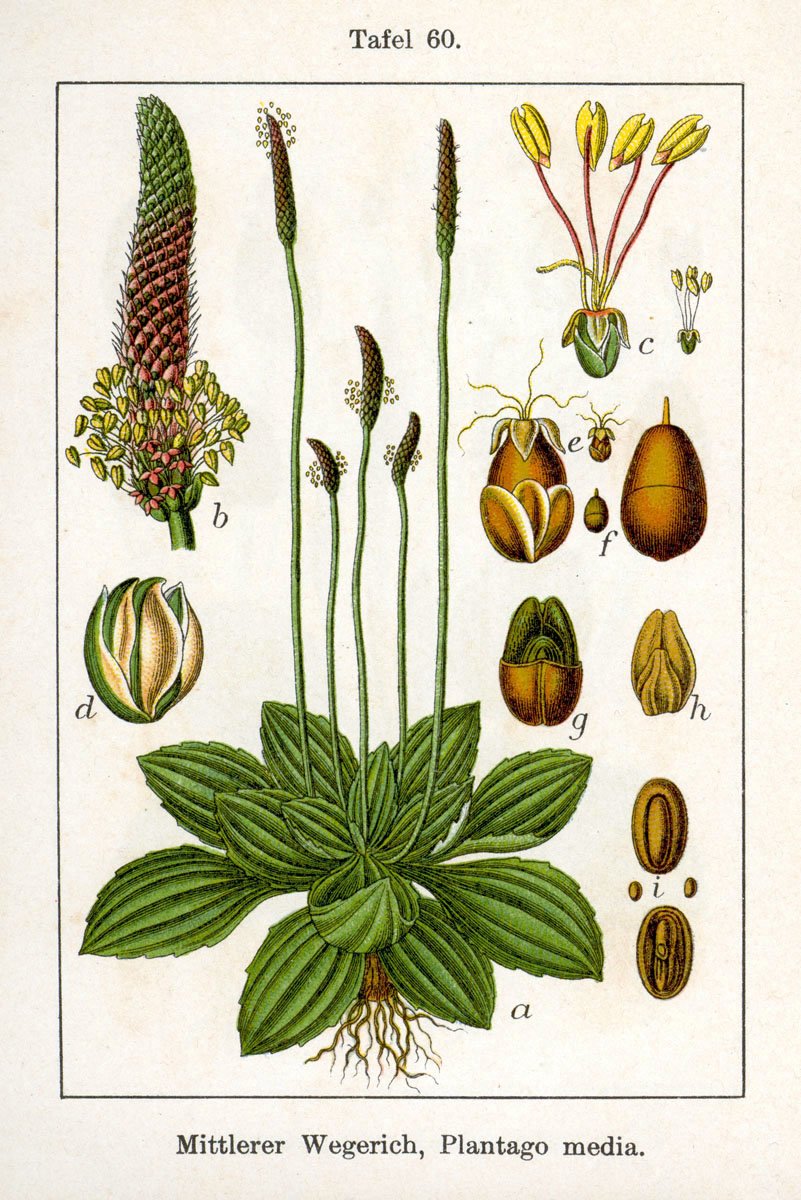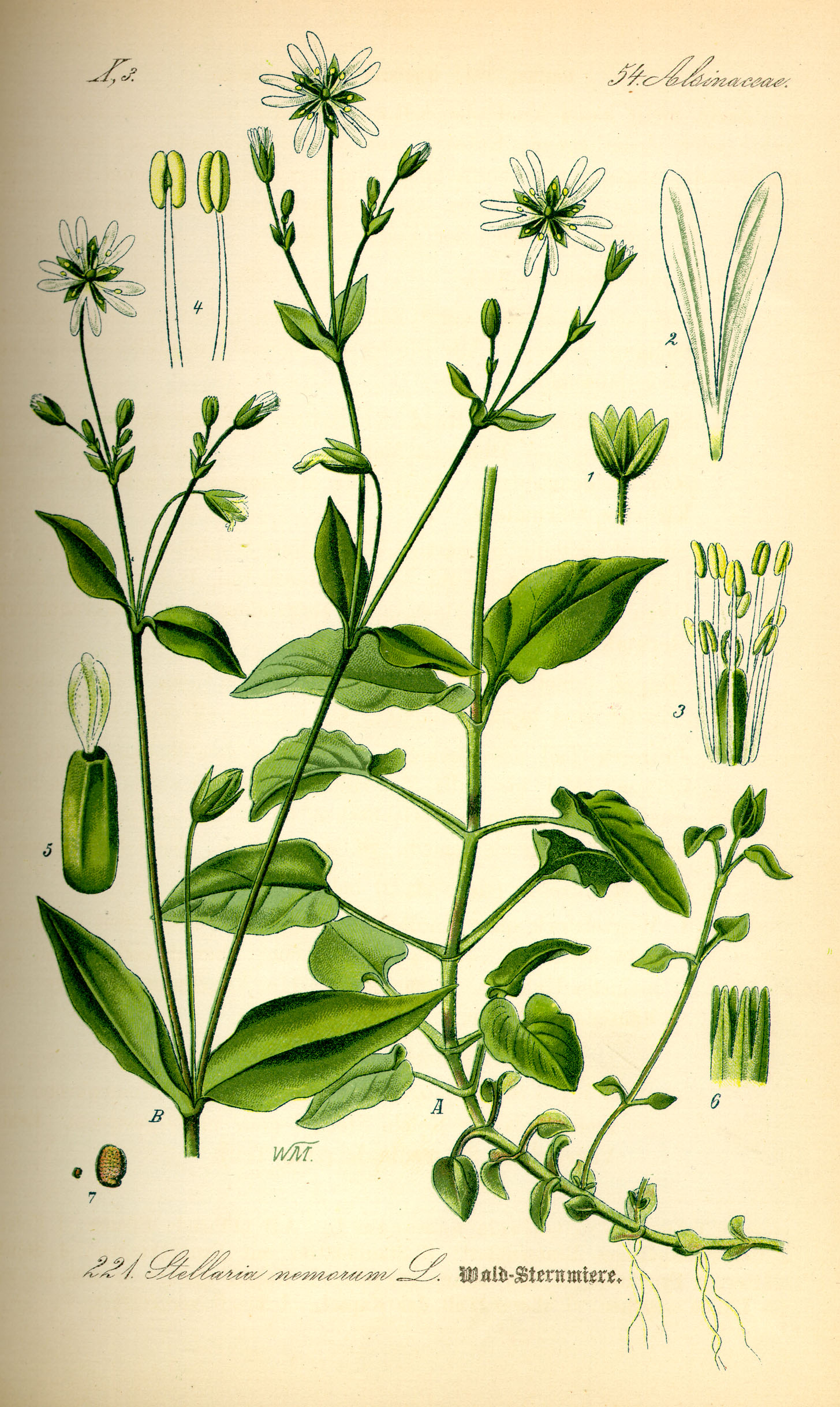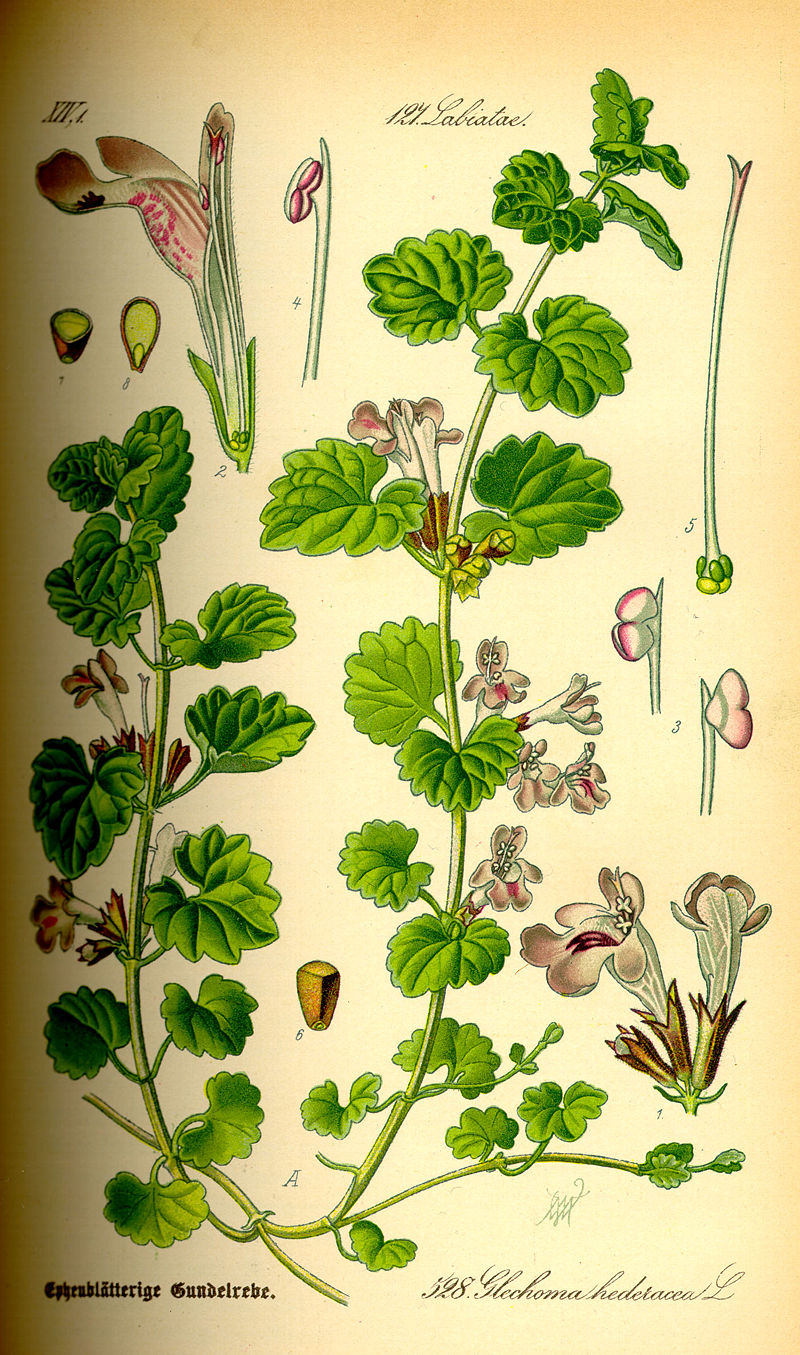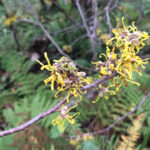One of the great things about fall is that so many of our spring ephemeral plants, those who dominate the springtime, come back to us again before the snows set in. This is the case this year with chickweed, one of my favorite plants for making a healing salve. I have been seeking her out for medicine making and most of the summer she was a bit elusive. Finally, she is abundant again! So its time to make some green healing salve for gifts for Yule for friends and loved ones–I thought I’d bring you along for the journey.

This post will provide the recipe for my healing salve as well as insight into three plants used in the healing salve, all of which can be found abundant in most lawns and mowed areas (see these two posts for information about ethical harvesting, avoiding toxins, etc). For quite a while, I sold these salves at a farmer’s market booth. The salves were a big hit–people reported back that they used them for all kinds of ailments: bee stings, bug bites, small burns, scratches, scraps, rug burns, sore and inflamed skin of all kinds, and so on–everyone who bought one loved them very much! Even after I moved to PA and obviously wasn’t selling the salves any longer, I had people contacting me wanting more salve. The plants in this salve can be 100% locally sourced and you can locally source the beeswax.
Salves can be made from any herbal ingredient that can be used topically. Because salves are oil-based, they are particularly good for cuts, minor burns, bug bites, skin irritations, dry and chapped skin, scrapes, bee stings, brush burns, and so on. Salves typically should not be used for puncture wounds (they can lock in contaminants), on anything that is wet or pussy (for the same reason, a fresh poultice or honey preparation would work better), nor should any oil-based salve be used for poison ivy (it is an oil-based issue, so an oil-based salve can spread poison ivy, use lineaments or fresh poultice). You can use this same recipe for other kinds of infused oils and salves, like goldenrod, St. Johns Wort, black birch, and so on.
The Healing Salve as Plant Ambassador
My choice of using three plants–chickweed, plaintain, and ground ivy–commonly found in the lawn is a careful one. For one, they make a fantastic healing salve. But for two, their work as healing agents can help begin to shift people’s minds and practices towards the lawn. If you had a splinter or cuts that could be easily–and more effectively–healed by plants in the lawn, the plant gives you relief and that healing changes your relationship to the plants and to the lawn. If people know that there are healing plants they might gather from the lawn, its easier for them to stop spraying it. Its for this reason that I believe these little salves like these are wonderful ways of being a plant ambassador and doing the work of building awareness about nature’s great gifts. And without further delay, let’s meet the three plant allies that go into this delightful salve!
The Plant Allies for Healing Salve
Plantain (Plantago Regalia, Plantago Major)
Plantain is the gateway herb! Its an easy herb to identify and find and can be used for a VERY wide variety of issues and conditions. If you only made this salve with one ingredient, make it with plantain.

Identification: Two kinds of plantain typically can be found in a lawn: broad leaf (see picture, left) and narrow leaf plantain. They are used interchangeably. See the botanical illustration for a detailed look at plantain.
Actions: Demulcent, Astringent
Medicinal Uses: Plantain has a host of uses, both internally and externally. The best way to think about plantain is that it works on the mucus membranes. Plantain is very mild yet effective as a mild demulcent (it wets tissues) and mild astringent (it also helps tone tissues). It functions as a fantastic drawing agent, where it works to draw things out (like splinters, drawing out infections, drawing out debris from a dirty wound, puncture wounds). For these uses, fresh plantain poultice is the best, but the healing salve is a close second! Plantain (poultice, fresh) works very well on poisonous snake bits and spider bites. Plantain can be safely used with animals (so for cuts and scrapes from a cat fight). A plantain infusion can be used as an eye wash for goopy eyes (conjunctivitis) if you add a little salt to it (1 teaspoon of salt to 1 cup plantain tea). Plantain is very effective for inflamed tonsils, bleeding gums (just keep it in the mouth and chew it). We are using plantain in this salve for for its drawing action, astringent action, and demulcent action.
Preparation: Oil infusion/salve; dried for tea; tinctured; fresh poultice or chew.
Chickweed (Stellaria Media, spp.)

Identification: Chickweed is a small, succulent plant that has a smooth stem with a line of hair running along it like a horse’s mane. It has a tiny white flower with 10 petals (in five directions). It is a spring ephemeral plant; it can be harvested in abundance in the spring and again in the fall. You could also make this salve just with chickweed.
Actions: Demulcent, Tonic
Features: Chickweed is used in several ways, and in all, it is a very mild yet effective plant. Chickweed is particularly good for any dry and inflamed skin conditions such as eczema, psoriasis, or the may minor bites, cuts, scrapes, brush burns, bee stings and so on. It should not be used for pussy/mucus laden/wet/damp skin conditions. A fresh poultice of chickweed is good for poison ivy (use similar to Jewelweed). Another way that Chickweed is used is that it is an alterative, metabolic tonic (it is thought to work on underactive thyroids, drying and causing the release of fluids). Chickweed can be eaten as a nutritive, healing food. It is very rich in nutrients and nourishing.
Preparation: Fresh plant in food, poultice, healing salve, tincture, dried for tea.
Ground Ivy (Glechoma Hederacea)

Identification: This plant will uptake any heavy metals in the soil—so make sure you are harvesting it from a safe area.
Actions: Aromatic, Astringent
Medicinal uses: Ground ivy is an aromatic herb in the mint family with a very wide range of uses—it is generally a very safe plant to use for many different issues. It has an astringent property, specifically for the kidneys and urethra (can be made as a tea for urinary tract infections). It can be used for a sore throat, especially if the inflammation is making its way up your throat and into your ears or if you have a dry, scratchy throat. Its good for ear issues in general, like fluid congestion or vertigo or ear pressure from a head cold. Its also used for digestive issues where there is laxity or mucus in the stool and gassiness (again, it is used as a tea in this fashion). One of the traditional uses of this plant is to treat lead poisoning – a ground ivy tea increase the removal of lead from the body (and some herbalists are currently experimenting with its ability to remove other toxins from the body). The whole plant (above ground) can be used. Finally, ground ivy can be used as a drawing agent and used to help treat, according to Culpepper, “old green wounds.”
Preparation: Oil infusion/salve; dried for tea (note-it loses its aromatic quality fairly quickly); tinctured. Please note that ground ivy does not have a long shelf life–I’d say 4-5 months at most.
Healing Salve Ingredient List
- Good quality olive oil (2-3 cups, depending on the amount of salve you want to make)
- Good quality beeswax (get it from a local beekeeper if possible); it should smell amazing if its a high quality wax
- Good amounts of your three plant allies (I like to use 40% plantain; 40% chickweed, and 20% ground ivy); you can use 100% plantain or 100% chickweed; or you can use 50/50 plantain and chickweed.
- Skin-safe essential oils of your choice (optional, consider: lavender, tea tree, sweet orange, and lemongrass)
- Jars or tins
- Labels for your salves
You’ll also need some equipment: a double-boiler; a grater for the wax; a spoon or ladle for pouring salve into tin and mixing salve; and wax paper for protecting work surface.
Making the Healing Salve: Part 1 – Infused Oil
The first thing to do to make a healing salve is to make an infused oil, that is, an oil infused with plant matter.

I typically use olive oil for this recipe because it is both very shelf stable and readily available in organic oil. You can also use other oils (like coconut oil) but most herbalists use olive oil. Coconut oil has a very low melt temperature, which can be a problem with a healing salve meant to travel with you (say, in your pocket, or in your car on a hot day, etc).
Wilt Your Herbs (if using fresh): All herbs, but chickweed in particular, should be wilted 1-2 days prior because of their high water content. Wilting just means to pick the plant matter and let them sit out somewhere for a few days while they slowly dry out. You can also use dried ingredients. Failure to account for the water content means that the oil you infuse may have a bit of water on the bottom–you need to avoid this or you’ll end up with a salve that goes rancid quickly. But you can just pour off your salve and leave the water in the bottom (see photo below).

Use Heat or Time to Infuse: You can infuse oil in a lot of different ways, but the way I like to infuse oils is by using a double boiler over low heat for 12 hours (don’t boil the herbs), and then letting the herbs sit in the oil with the heat off for another 12 hours. After this time, the herbs can be strained and the oil ready to use. If you are using fresh plants, beware of any water content in the oil—it will be sitting on the bottom of your pot and look like little dark bubbles. You do not want ANY water in your oil or it will spoil quickly. You can store your infused oil in a cool, dark place for 1-2 years.

The Healing Salve, Part II: Making the Salve
My Backyard Green Healing Salve Recipe:
My favorite backyard healing salve is made with 40% plantain, 40% chickweed, and 20% ground ivy; handfuls of each infused in olive oil (enough olive oil to cover the herbs). Another plant that can be used in this salve is Jewelweed (but it is a wet forest plant, not a yard plant!) or comfrey (a cultivated plant in most areas).
1. Once your oil is done infusing, strain it. I prefer to strain it through a cheesecloth or fine strainer overnight. The gravity will do nearly all of the work for you if you wait. Also, if you try squeezing the plant material and you are using fresh plants, you could end up with more water in the bottom. Again, an overnight straining prevents the need to squeeze.
2. Put your oil back in your (clean) double boiler. To make the salve, start with your filtered infused oil and return it tot your double boiler. Make sure the oil is 100% free of plant mater or water (which will look like little bubbles on the bottom) – either of these will make it go rancid. See photo below for example of water at the bottom:

3. Heat your infused oil up till its hot enough to melt beeswax (but no hotter).
4. Add shaved or chunked beeswax (about 2 tbsp per cup of oil) stir it to melt the beeswax fully. Your oil needs to be thickened into a salve that will hold its shape and have some body–and for that, we add beeswax. After adding your beeswax and melting it in, test the consistency by dropping a tiny bit of oil onto an ice cube and see how hard it gets. If its too hard, add a bit more oil. If its too soft, add a bit more beeswax. You can get it as hard as you’d like, but I recommend keeping this salve fairly soft since it will need to be spread upon a lot of sore, tender spots.
5. Remove the oil from the heat.
6. Add any essential oils you like to the salve for smell. The salve has a pretty “green” smell without the oils; its not unpleasant but isn’t really pleasant either, so I like to add the oils. My favorites for this blend are a few drops of tea tree oil, lemongrass oil, lavender oil, or orange oil. (Lavender-lemongrass is a great combination, as is tea-tree orange). For 1 cup of salve, I add 20 drops of essential oil.
7. Prepare your workspace for pouring the salves. At this point, I will set wax paper down and set out my tins or jars. The wax paper prevents salve from getting all over my counter when I’m pouring.
8. Pour off your salve into the small jars or tins and let cool. You can use mason jars, little Altoids tins, whatever you have around that will hold a solid salve. I also like to make a harder version of this salve (with a higher beeswax content) and then fill lip balm containers with it for hiking, backpacking, etc! Make sure you fill them slightly fuller than you want them to be, as the salve sinks and contracts a bit as it cools.

8. Label your salves with a fun label! Here’s an example of my salves at the farmer’s market with their cute labels (I was nearly sold out that day!)

I hope you enjoy this wonderful backyard healing salve! It is particularly useful for home use–I also use it frequently with my flocks and animals on my homestead.




Thank you!!!
You are most welcome! 🙂
Reblogged this on Mama Bear Musings and commented:
Healing Salve Recipe
Thanks for the reblog 🙂
Reblogged this on ravenhawks' magazine.
Thanks so much for sharing this recipe Dana! These are such excellent and very specific directions with loads of those ‘little extra’ tips: )
OMG. I was wondering how to do this today! Thank you
Glad you found it helpful!
Reblogged this on Rattiesforeverworldpresscom and commented:
Sounds great, easy and funny! I will try it 🙂
[…] ♦ Because ground ivy is considered helpful for healing bruises and skin issues, it’s something to consider adding to homemade salves, like this healing salve from the Druid’s Garden. […]
Love this will make someday. We eat many weeds and love chickweed pie it is the best. But salve is out of my purview and I like to learn new things. We have at least 2 of these plants in our yard but we do have Jewelweed, the yellow form which oddly grows on our hilltop. Looks like and orchid and bees, butterflys and hummingbirds love them. Dirty boot gift.
Sounds great! I love chickeweed too, but I have never made it into a pie. Is that like a quiche or something else?
I have a Back surgery perjury and I’m having so much pain I have creepy Charlie And chick weed can I mix them together to make oil Thank you.
Yes, you certainly can. But for ground ivy/creeping charlie, that isn’t really a pain relieving plant–it is more good for wound healing and drawing. Pain relieving plants include anti-inflammatories like goldenrod (leaf, flower), st. johns wort (leaf flower), black birch (inner bark) and pain numbing plants like kava kava (root) and cannabis (leaf, flower, stem), to name a few.